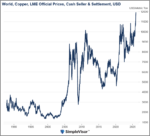- USD/JPY regains positive traction on Tuesday, albeit the uptick lacks bullish conviction.
- A positive risk tone undermines the safe-haven JPY and lends some support to the pair.
- Bets for bigger Fed rate cuts weigh on the USD and should cap gains ahead of the US CPI.
The USD/JPY pair attracts some dip-buying during the Asia session on Wednesday and climbs back above the 147.00 mark in the last hour, reversing the previous day's modest downfall. Spot prices, however, remain confined in a familiar range held over the past week or so as traders keenly await the US consumer inflation figures before positioning for the next leg of a directional move.
The closely-watched US Consumer Price Index (CPI) report is due for release later today and will be looked upon for cues about the Federal Reserve's (Fed) rate-cut path. This, in turn, will play a key role in influencing the USD demand in the near term and provide some meaningful impetus to the USD/JPY pair. Heading into the key data risk, the upbeat market mood is seen undermining the safe-haven Japanese Yen (JPY) and acting as a tailwind for the USD/JPY pair.
Meanwhile, data released on Tuesday showed that the US Producer Price Index (PPI) rose less than expected in July, supporting prospects for deeper interest rate cuts by the Federal Reserve (Fed) in September. This, in turn, dragged the US Treasury bond yields lower across the board and the US Dollar (USD) to over a one-week low. Apart from this, expectations that the Bank of Japan (BoJ) will hike rates again in 2024 help limit the JPY losses and might cap the USD/JPY pair.
Even from a technical perspective, the recent range-bound price action points to indecision among traders. This further makes it prudent to wait for strong follow-through buying before confirming that spot prices have bottomed out near the 141.70-141.65 region, or the lowest level since early January touched last week.
Risk sentiment FAQs
In the world of financial jargon the two widely used terms “risk-on” and “risk off'' refer to the level of risk that investors are willing to stomach during the period referenced. In a “risk-on” market, investors are optimistic about the future and more willing to buy risky assets. In a “risk-off” market investors start to ‘play it safe’ because they are worried about the future, and therefore buy less risky assets that are more certain of bringing a return, even if it is relatively modest.
Typically, during periods of “risk-on”, stock markets will rise, most commodities – except Gold – will also gain in value, since they benefit from a positive growth outlook. The currencies of nations that are heavy commodity exporters strengthen because of increased demand, and Cryptocurrencies rise. In a “risk-off” market, Bonds go up – especially major government Bonds – Gold shines, and safe-haven currencies such as the Japanese Yen, Swiss Franc and US Dollar all benefit.
The Australian Dollar (AUD), the Canadian Dollar (CAD), the New Zealand Dollar (NZD) and minor FX like the Ruble (RUB) and the South African Rand (ZAR), all tend to rise in markets that are “risk-on”. This is because the economies of these currencies are heavily reliant on commodity exports for growth, and commodities tend to rise in price during risk-on periods. This is because investors foresee greater demand for raw materials in the future due to heightened economic activity.
The major currencies that tend to rise during periods of “risk-off” are the US Dollar (USD), the Japanese Yen (JPY) and the Swiss Franc (CHF). The US Dollar, because it is the world’s reserve currency, and because in times of crisis investors buy US government debt, which is seen as safe because the largest economy in the world is unlikely to default. The Yen, from increased demand for Japanese government bonds, because a high proportion are held by domestic investors who are unlikely to dump them – even in a crisis. The Swiss Franc, because strict Swiss banking laws offer investors enhanced capital protection.
Tags: Featured,newsletter





























